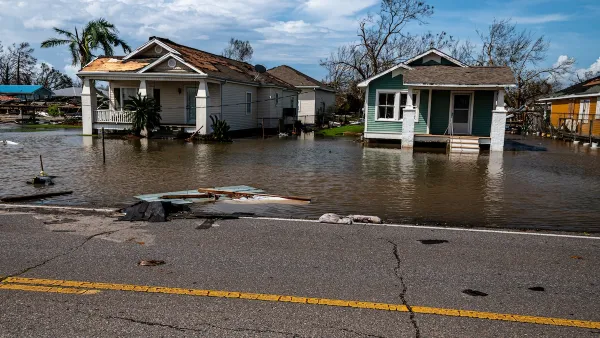New federal guidelines for disaster planning are being panned by state and local officials, citing a poorly-defined chain of command and unnecessary duplication.
The Bush administration's new federal disaster-response plan drew harsh criticism yesterday from state and local officials only a day after it was unveiled, prompting fresh calls by House Democrats to make the Federal Emergency Management Agency a stand-alone Cabinet-level agency.
[S]tate and local emergency managers said the new plan offers insufficient detail for guiding the actions of officials in charge of handling specific incidents and leaves unclear the chain of command, from the president to workers on the scene.
Robert C. Bohlmann, emergency manager for York County in Maine and spokesman for the International Association of Emergency Managers, warned at the hearing about a "major disconnect" between that legislation and the new National Response Framework (NRF), which states that the secretary of homeland security is in charge of managing domestic incidents.
Tim Manning, director of homeland security and emergency management for New Mexico and spokesman for the National Emergency Management Association, whose members include his counterparts in the 49 other states, said he "could not object more vociferously" to the framework's concept that separate operational and strategic plans will be developed for 15 federally designated disaster scenarios.
"When you scale up to the level we're talking about, to have very duplicative plans with 30 variations will be disastrous," Manning said.
FULL STORY: Proposed Disaster-Response Plan Faulted

Planetizen Federal Action Tracker
A weekly monitor of how Trump’s orders and actions are impacting planners and planning in America.

Vehicle-related Deaths Drop 29% in Richmond, VA
The seventh year of the city's Vision Zero strategy also cut the number of people killed in alcohol-related crashes by half.

As Trump Phases Out FEMA, Is It Time to Flee the Floodplains?
With less federal funding available for disaster relief efforts, the need to relocate at-risk communities is more urgent than ever.

Index Measures Impact of Heat on Pedestrian Activity
When heat and humidity are high, people are more likely to opt for cars when possible.

Most Public Lands Are Safe — For Now
A proposal to sell off federally owned lands was removed from the Republican spending bill on procedural grounds.

Hundreds of New Yorkers Hospitalized Due to Extreme Heat
A brutal heat wave is causing hospitalizations for heat-related illnesses, an increasingly common threat as summers get warmer.
Urban Design for Planners 1: Software Tools
This six-course series explores essential urban design concepts using open source software and equips planners with the tools they need to participate fully in the urban design process.
Planning for Universal Design
Learn the tools for implementing Universal Design in planning regulations.
JM Goldson LLC
Custer County Colorado
Sarasota County Government
City of Camden Redevelopment Agency
City of Astoria
Transportation Research & Education Center (TREC) at Portland State University
Camden Redevelopment Agency
City of Claremont
Municipality of Princeton (NJ)


























